Design of 50~100 µm Terahertz Imaging Lens
terahertz;imaging system;coaxial sphere;Topas COC
Abstract
According to the needs of users of terahertz detection and imaging, an optical system suitable for the terahertz band is designed.
The focal length is 50 mm, the F number is 1, the working band is 50-100 capes, the receiver is a non-cooled IRMl60A infrared detector, and the full field of view is 11.9º. The system adopts a coaxial structure, consisting of 3 spherical lenses and 1 CCD protective glass, and uses Topas COC new material.
In addition, an aspheric surface is introduced to achieve the goal of simple system structure, light weight and low cost. The design results show that when the cut-off frequency is 10 cy/mm, the modulation transfer function of the optical system is close to the diffraction limit, the root mean square radius of the spot diagram of each field of view is much smaller than the Airy disk radius, and it has good imaging quality, so it can meet the overall design requirements of the terahertz optical system.
0 Introduction
Terahertz (THz) waves refer to electromagnetic waves with frequencies in the range of 0.1-10 THz.
It overlaps with millimeter waves in the long waveband and infrared rays in the short waveband, and belongs to the category of far-infrared and submillimeter waves. The discovery of THz waves fills the gap between the millimeter wave band and the infrared band.
The band positions of THz waves give them a series of special imaging properties:
(1) The photon energy is much lower than that of x-rays and y-rays, which is harmful to the human body or other organisms.The cell tissue will not produce destructive effects;
(2) High signal-to-noise ratio;
(3) THz radiation can penetrate materials such as ceramics, fabrics and plastics with little attenuation, which is suitable for low-concentration gas detection and environmental monitoring;
(4) THz waves are rarely absorbed in the space environment, and the propagation distance is very long, which is suitable for astronomical observations;
(5) THz wave not only has better directivity and higher spatial resolution than millimeter wave, but also has larger bandwidth and capacity than infrared light, so it has broad application prospects in military and communication fields.
According to different structural forms, THz optical systems can be mainly divided into three types: reflection type, refraction type and catadioptric type. Among them, the reflection type THz optical system can be divided into two types: coaxial reflection type and off-axis reflection type.
The coaxial reflection system can better correct spherical aberration and coma aberration, but its field of view is small, and there is a problem of energy loss caused by central occlusion, which is not conducive to the detection of weak signals. The THz optical system designed in the literature belongs to the off-axis three-reflection optical system. The system has the characteristics of large clear aperture, large field of view, no central blocking and no wavelength selection, which is more conducive to the detection of weak signals. However, its optical-mechanical structure is relatively complex, its processing and assembly are difficult, and its production cost is also relatively high.
The THz optical imaging system designed in the literature belongs to the refraction system, which has the characteristics of simple and compact structure, small size, low production cost and mature processing and adjustment technology. But its field of view is small, and the lens material is thallium bromide-thallium iodide (KRS-5). The transmittance of the material in the 30-40 stop band is about 60%, and the transmittance decreases rapidly after more than 40 cape; when the band is close to 70 cape, the transmittance almost drops to 0.
Therefore, the use range of KRS-5 material in the THz band is narrow. At the same time, the detectors used in such systems have not been put into actual production, so it is not easy to implement. In addition, a space camera with a working band of 12-26 capes is also mentioned in the literature.
The optical system of the camera is also a refractive system. It consists of 5 lenses with complex structure, and also uses KRS-5 material. The THz area array transmission imaging system designed in the literature is a catadioptric system, which consists of multiple off-axis parabolic mirrors and polyethylene lenses. The system has fast imaging speed and many pixels, but the process is complicated, it is not suitable for adjustment, the error is large, and the production cost is high.
In this paper, a coaxial structure is adopted, which consists of 3 spherical lenses, and an aspherical surface is introduced; Topas COC new material and efficient practical THz detector are used, and the 50-100 Cape THz band is designed. The system can also extend the wavelength to 200 Cape, and the image quality is still good, the performance is stable, and it has the characteristics of eliminating various aberrations, simple structure, light weight and easy installation.
1 THz imaging system
1.1 Detection principle of THz imaging system
A known THz wave generated by a THz source is used as the imaging beam. After being reflected or transmitted by the measured target, the THz wave records the relevant spectral information (including the complex permittivity intensity, amplitude and spatial distribution information of the phase) or the target information carried by the target’s own radiation.
After passing through the THz optical system, under the action of the chopper, the THz wave is focused on the THz detector and causes corresponding changes. Then it is converted into corresponding electrical signal responses according to different changes, and finally a two-dimensional or three-dimensional image of the target is obtained through signal acquisition, analysis and processing.
The THz imaging system consists of a THz light source, a measured target, a THz optical system, a THz detector, a data acquisition module, a data processing module, a data storage module, and a display. Figure 1 is a block diagram of a THz imaging system.
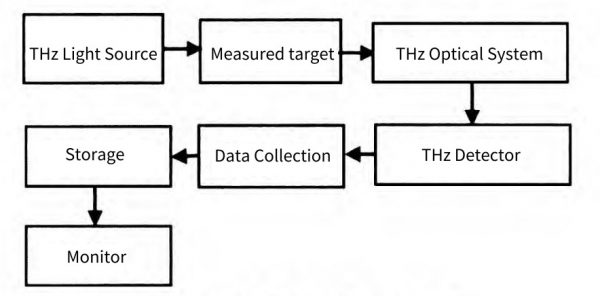
Figure 1 Block diagram of the THz imaging system
In the whole THz imaging system, the most critical part is the THz optical system. Therefore, it should meet the following requirements in the design:
(1) The structure is compact and easy to install and adjust;
(2) Meet the requirements of the field of view;
(3) The light energy loss is the smallest in the selected wavelength band;
(4) It has strong environmental adaptability and stable optical performance.
1.2 Comparison with other imaging techniques
THz wave belongs to the category of far infrared and submillimeter wave, and its imaging technology has become a powerful complement to infrared imaging and millimeter wave imaging technology. Table 1 lists the comparison of various imaging techniques.
Table 1 Comparison of various imaging techniques
2 THz optical system design
2.1 Technical indicators of the optical system
According to the actual needs of users, we have determined the technical parameters of this system:
The focal length is 50 mm;
F number is 1;
The working band is 50-100 µm.
The selected receiver is a non-cooled IRMl60A infrared detector with an external dimension of 8.32 mmx6.24mm, a pixel size of 52µmx52 µm, and a full field of view of 11.9º.
2.2 Material selection of optical system
There are relatively few materials with good transmittance in the THz band. At present, there are mainly two types of high-resistance silicon and plastics. Among them, plastics mainly include high density polyethylene (High DensityPolyethy-lene, HDPE) and polytetrafluoroethylene (Polytetrafluoroethy-lene, PTFE) and the like.
A new type of material, CyclicOlefin Copolymer (COC), is used in this paper, and its trade name is Topas COC. Compared to high-resistance silicon, Topas COC has a lower refractive index and its lenses have very low reflection losses at the dielectric interface. Compared to HDPE and PTFE, Topas COC has lower losses and negligible dispersion in the THz band.
This optical material has many good properties:
It has extremely high transmittance, low birefringence, extremely low water absorption and high Abbe number in the whole spectrum range;
At the same time, it has better heat resistance, lower thermal expansion coefficient, more stable chemical properties and better mechanical properties.
2.3 Initial structure selection
According to the angular deviation limit that a single lens can bear and the technical specifications of the system, the system needs at least 3 lenses to meet the design requirements. By looking up the corresponding literature, we choose the 3-piece initial structure shown in Figure 2.
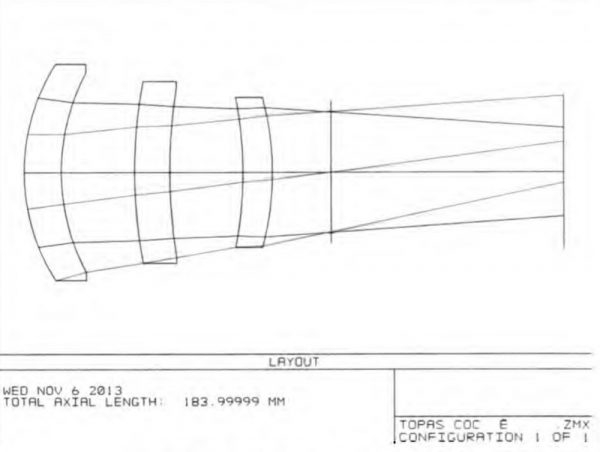
Figure 2 Initial structure of the optical system
2.4 Design process analysis
The initial structure was optimized using ZEMAX optical design software. Set the stop to coincide with the first face. Since the diaphragm and the lens are coincident, not only the distortion and magnification chromatic aberration of the terahertz optical system can be well corrected, but also the diameter of the lens and the size of the system can be effectively reduced.
The cover glass in front of the CCD produces all aberrations except field curvature, which should be corrected with the 3 lenses when correcting the aberrations. The aberration contributions of each facet of the system are analyzed below. First, set the radius of curvature of the surface that contributes more to the aberration as a variable and optimize it, and then gradually increase the number of variables and compensate for each other.
Through automatic optimization and manual adjustment, the system can jump out of the optimal value within a small range. After many optimizations, analyze the aberration of the system at this time. In order to improve the imaging quality and simplify the structure, we decided to introduce an aspheric surface in the design.
Here, the main role of aspheric surface is to control spherical aberration. After optimization, the 2nd, 4th, 6th and 8th order phase coefficients of the even-order aspheric surface are -7.289×10-3, 2.299×10-6, -8.002×10-10, 4.331X10-14, respectively.
2.5 Design Results
After repeated optimization of the system, a high-performance THz imaging objective lens was finally obtained (see Figure 3 for its structure).
The system consists of 3 spherical lenses and a CCD protective glass, the first surface of which refers to an aspherical surface, and the thickness of the protective glass is 1.5 mm.
The optimized optical system has a focal length of 50 mm, an F-number of 1, and a full field of view of 11.90º, which meets practical application requirements.
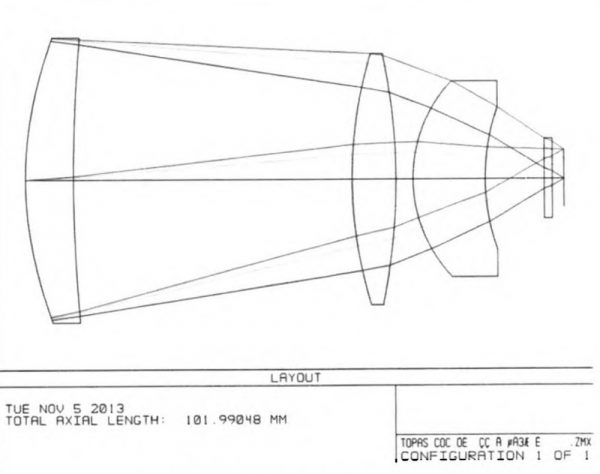
Figure 3 Structure diagram of the optical system
When the focal length of the designed THz imaging system is zoomed from 50 mm to 30 mm or 70 mm, the imaging quality of the whole system is still good. At the same time, when the working band of this system is extended from 50-100 cape to 200 cape, it still meets the imaging requirements.
In optical systems, modulation transfer function (MTF) is usually used as the main means to evaluate imaging quality. Figure 4 shows the MTF of a THz optical system.
According to the pixel size of the detector (52 block n×52 point), the corresponding spatial cutoff frequency can be calculated as 10 cy/mm. It can be seen from Figure 4 that when the cutoff frequency is 10 cy/mm, the transfer function is close to the diffraction limit, indicating that the imaging quality is good.
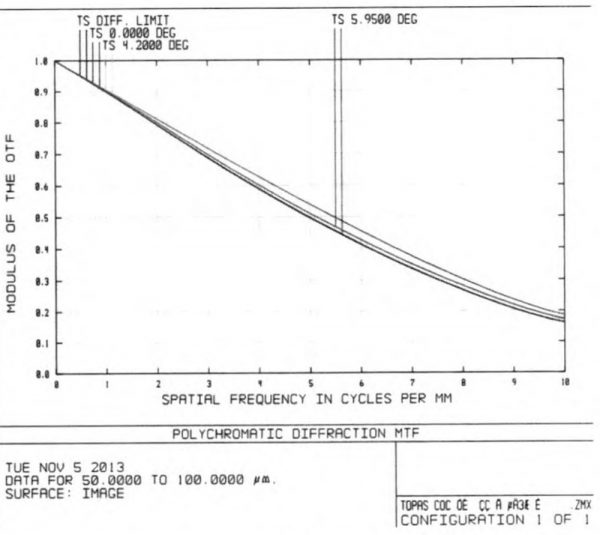
Figure 4 MTF of the optical system
FIG. 5 is a dot diagram of a THz optical system. Among them, the root mean square radii of the scattered spots in each field of view are 31.463, 16.950 and 27.072, which are far smaller than the Airy disk radius (85.35) of the ideal optical system, which meets the requirements of the system.
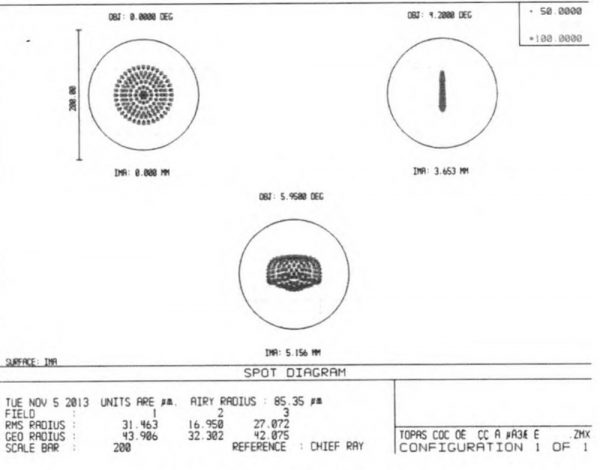
Figure 5 Spot diagram of the optical system
Since the distortion is the chief ray aberration, the distortion of the system cannot be evaluated by MTF, so the distortion needs to be analyzed separately.
The distortion of the general optical system should be less than 5%, and the distortion of this system is less than 2% (see Figure 6), indicating that the distortion of the system fully meets the imaging requirements.
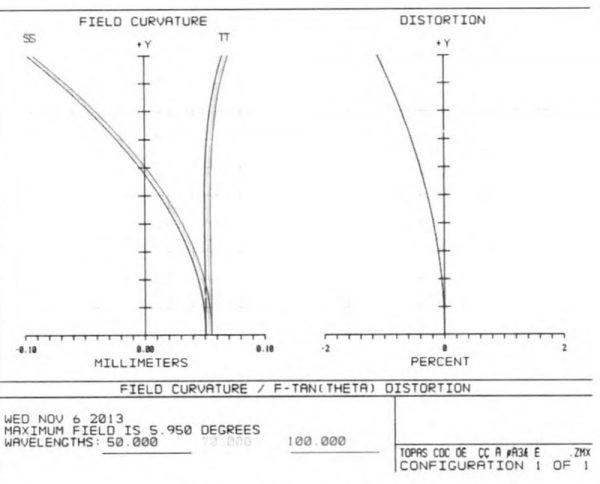
Figure 6 Distortion of the optical system
According to the design requirements, the image quality of the lens was evaluated by MTF, and the test results were obtained under the conditions of 20℃ temperature and one atmosphere pressure. Topas COC has excellent optical properties. When the temperature changes in the range of 140°C to +60°C, the refractive index of the lens remains unchanged, and the MTF of the lens is still excellent.
3 Conclusion
In this paper, a high-performance THz imaging system is designed according to user requirements. The system only consists of 3 spherical lenses and 1 CCD protective glass, and has the characteristics of simple structure and light weight.
Compared with the literature, the optical system designed in this paper does not use diffractive elements, which is more convenient for practical processing and application. The MTF of each field of view of the system is close to the diffraction limit, and the image quality is excellent.
When the cut-off frequency of the CCD is 10 cy/mm, the MTF of each field of view is greater than 0.16, which is much larger than the Weber ratio (0.02) of the human eye, and is superior to similar foreign systems (in the literature, when the cut-off frequency of the CCD is 10 When cy/mm, the MTF of each field of view is less than 0.05).
The relative aperture of the system in this paper is large, and the F number is 1, which is conducive to the detection of weak signals and meets the requirements of the THz imaging system for light energy.
